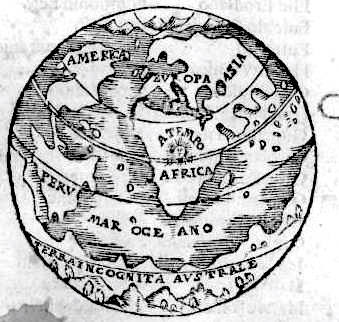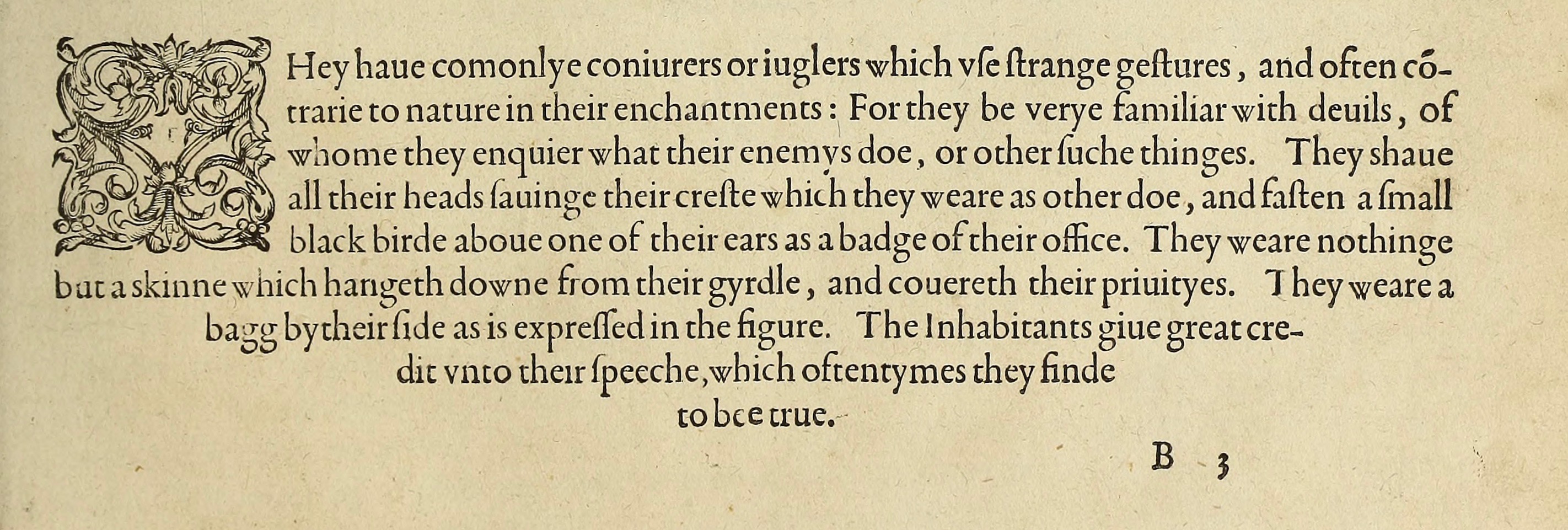This report was compiled by Thomas Harriot and John White, leaders of the second Roanoke expedition of 1585, and first printed in London in 1588. Theodor de Bry published a 1590 edition in four different lan- guages as part of his Great Voyages series, entering the report into a global conversation around colonial speculation. The book promotes the British colonial enterprise in Virginia, advertising the agricul- tural potential of the land alongside an ethnography of its Indigenous inhabitants.
Significantly, de Bry substituted en- gravings for the watercolor paintings of the first edition. The engravings relate not only European interpre- tations of Roanoke and Indigenous culture, but also representations of race as mediated through a trans- atlantic network of printing. The classicized form of the “Coniuerer,” is belied by a frenzied pose that would have evoked pre-existing European associations between Indians and witchcraft. Here, racial difference is predicated on cultural, not physical characteristics. The engravings exot- icize the actions of Indians as they si- multaneously ground their bodies in familiar representations, revealing an environmental understanding of race. This worked in tandem with claims that Indians craved “the knowledge of the Gospel,” presenting them as ideal targets for Christianization.
Citation
Thomas Harriot, A briefe and true report of the new found land of Virginia. Frankfurt: Theodor de Bry, 1590.[Catalogue Entry][archive.org]

